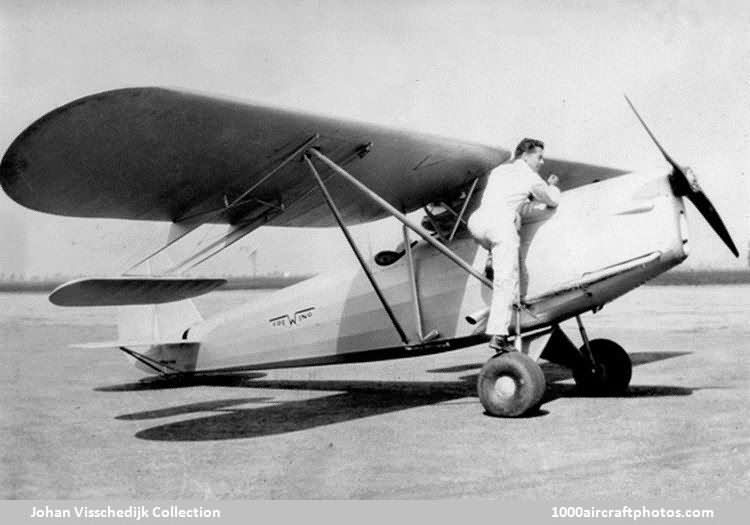09/30/2013. Remarks by Johan Visschedijk: "In the mid-1920 George Wilbur Cornelius started a program of experimentation on variable incidence wings. No technical reports on the results of his work appear to have been published and little is known about the four types he produced. In 1930 George Wilbur Cornelius formed Cornelius Aircraft Co. at Glendale, California.
The first aircraft, the FreWing, was designed by Cornelius and C.C. Spangenberger. It was a parasol monoplane single-seater in which the incidence of the mainplanes was adjusted differentially like ailerons, and collectively like elevators in conjunction with a stabilator tail plane. Initially, each mainplane had a servo surface extending behind it on two booms attached to the undersurface, but these were later removed as unnecessary. The engine was an 125 hp Menasco B-4. Span was 30 ft 6 in (9.30m), length was 20 ft 6 in (6.25 m).
Next came the low-wing two-seater LW-1 (X13706) which used the short-lived four-cylinder inverted in-line 120 hp Martin 133 engine and had the same control system. It was, no doubt, intended to improve performance by dispensing with the drag of the multiple strutting needed for its parasol predecessor.
The Mallard (NX34212) was a forward swept-winged tailless monoplane with a 130 hp Franklin flat-four engine. With a comfortable side-by-side two-seating it was demonstrated publicly by Alfred Reitherman. It was clearly intended to lead to production, but none resulted. Possible customers were no doubt wary of the variable incidence wing as a new and unknown feature, and the 125 mph cruising speed quoted may have been projected rather than actual, considering it was described as 700 lb overweight and underpowered.
The 677 gal (2,563 l) experimental fuelling glider XFG-1 incorporated Cornelius' experience with swept-forward wings and was intended to be towed pilotless with the controls locked. After the fuel was transferred to the towplane, it was to be cast off and abandoned. An alternative use was as a piloted fuel carrier, jettisoning its landing gear after take off, and landing at its destination on two skids at the bottom of the fuselage.
The incidence of the XFG-1 wing was adjustable on the ground at 3°, 5° and 7°. With a swept-forward wing, an increase in incidence raises the wing tips and produces dihedral, which may explain why some accounts describe the adjustment as variable dihedral.
Two were produced for the USAAF in 1945 by the Spartan Aircraft Corporation at Tulsa, Oklahoma, under the serials 44-28059, 44-28060. Thirteen flights were made in prototype 44-28059 by Reitherman, on the last of which he was killed after failing to recover from a spin. The second machine, 44-28060, made 19 flights, but work was discontinued with the end of WW II."
